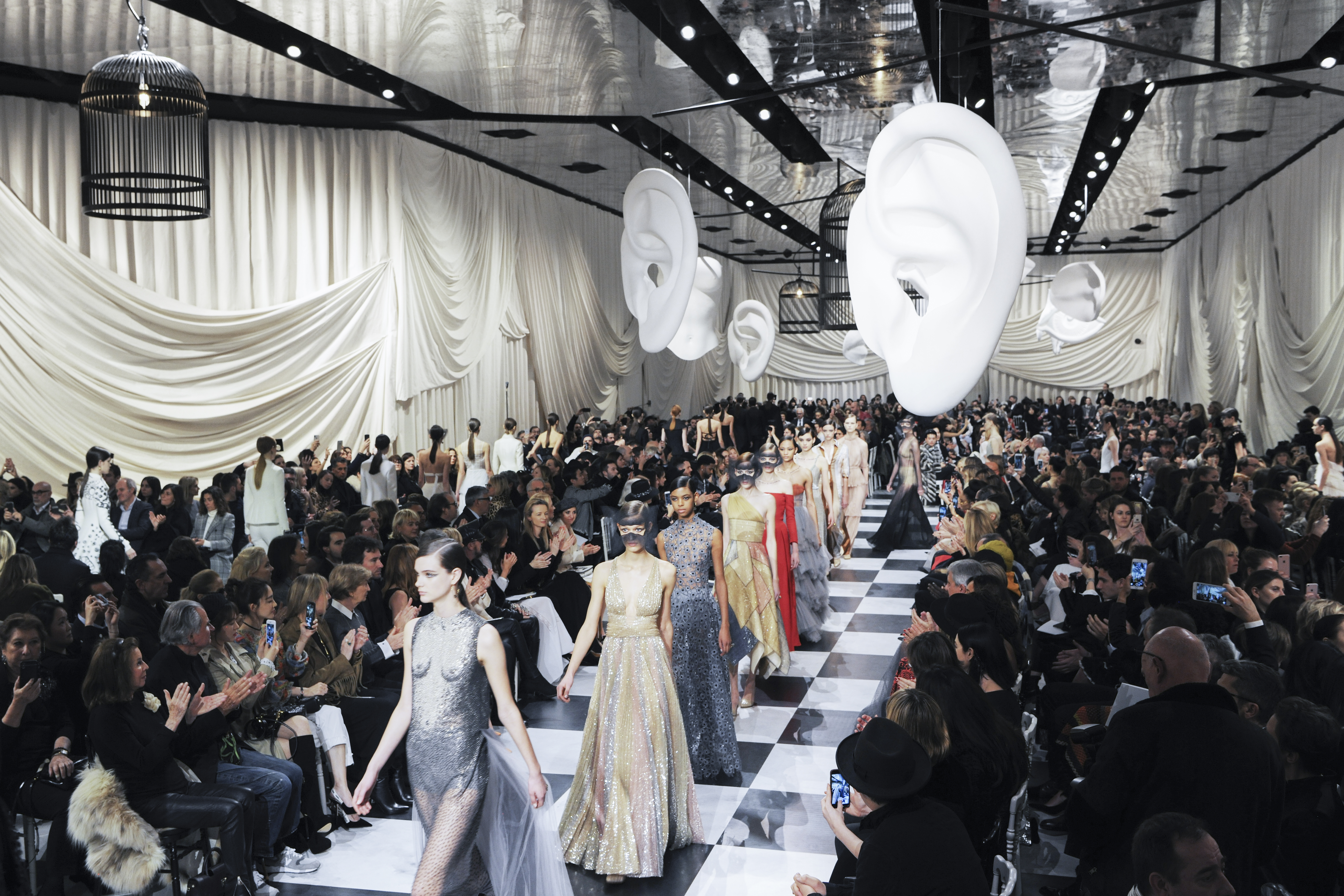“Only the inevitable theatricality of my life interests me.”
Leonor Fini
The history of haute couture is intimately linked with the history of modern art. The couturier is an artist unto himself and the word “atelier” designates equally the studio of an artist or that of a designer. But any artist’s true “studio” is his or her spirit. It’s in this dimension, located somewhere between dream and reality, or imagination and realization, that Maria Grazia Chiuri, the Artistic Director of the House’s women’s collections, pursues her research and explorations. Because haute couture is a dream of fashion. It’s a place where there are no limits to pushing boundaries and experimenting with technique, material and form. Immersing herself in the heart of the Surrealist movement made it possible to bring a fresh breath of imagination to the spring-summer 2018 haute couture collection, conjuring an otherworldliness and constant optical illusion.
Surrealism also applies to the evocative words and phrases that guided Maria Grazia Chiuri in creating a collection predominantly in black in white sprinkled with illusion and surprise.
Never trust a frst impression… In that spirit, generous pleats on a white evening dress are etched in black like the pages of a book, while caging, a recurring motif in Surrealist works, is transformed into a black mesh fabric that hugs the body and underscores transparency as silvery fshnet mingles with the density of velvet.
But above all, it’s the charisma of the artist Leonor Fini that defnes this collection’s strict yet radical attitude. Leonor Fini, who left Italy for Paris in the Thirties, held her frst exhibition in Christian Dior’s gallery and befriended the designer from that moment onward. Whenever she made one of her phantasmagorical appearances, she often wore Dior. Leonor Fini was the incarnation of the then-revolutionary idea that one must always remain independent and reinvent oneself as a representation of all possible realities. She used clothing to defne herself and set her own stage, in public as in private: at once influential, severe and elegant, she struck poses inspired by portraits of men from the Renaissance, by the constant interaction of art and life, and the blend of the natural and artifcial. These marvels of haute couture came into being in a dimension suspended between dream and reality.
The same applies to the daywear for which Christian Dior had such a knack, and notably to shapes reinterpreted using traditional men’s wear fabrics. Maria Grazia Chiuri draws on these as inspiration in a series of suits that recalibrates Dior’s curves to today’s tastes, paired with skirts of multiple contrasts.
Ever faithful to the Surrealist tradition of deconstructed forms, accessories make their presence felt in a whimsical way: a fshnet stocking veils a sandal, while gloves clutch an ankle. It’s this way of seeing and being seen, with a point of view that draws on the unconscious and today’s world, that Maria Grazia Chiuri uses as a foil for embroideries and other embellishments. On a dress illuminated by a mirage of peacock feathers, precious and delicate ornaments become eyes that behold and express mystery
— as well as the spiritual power of today’s women.








No Comment